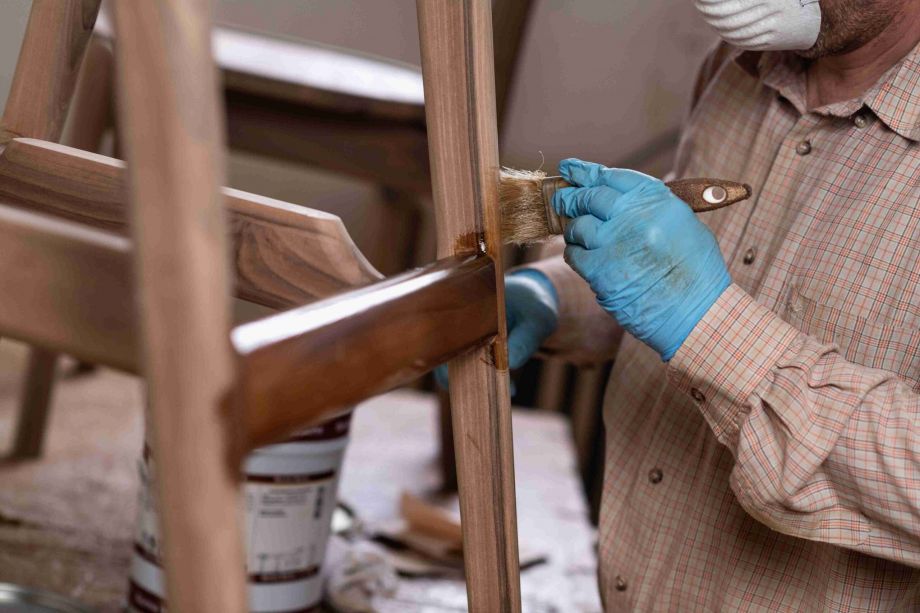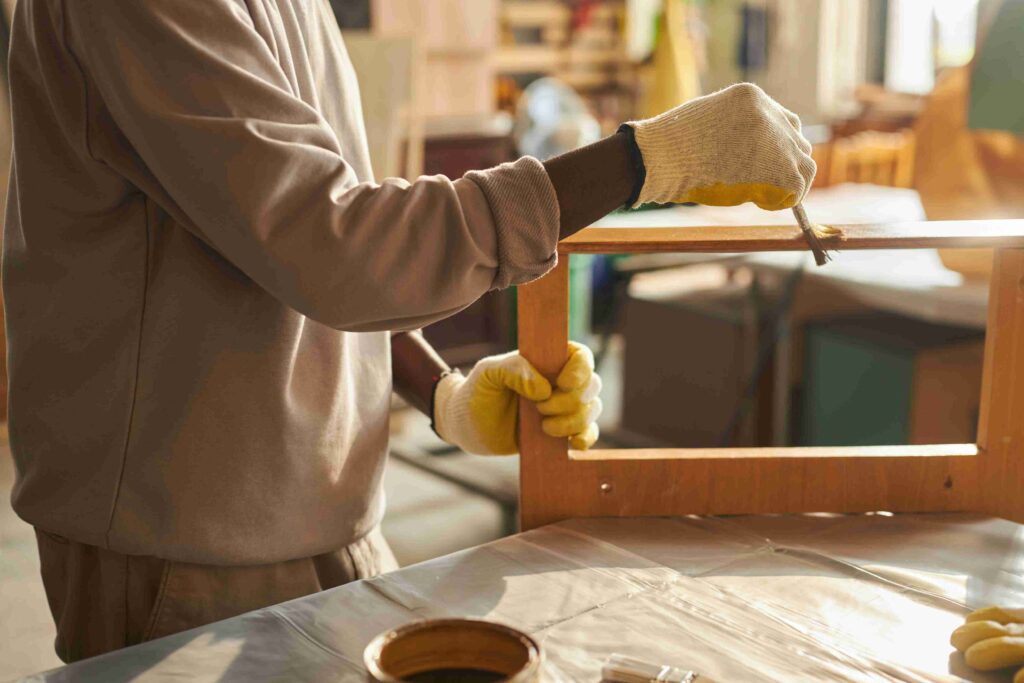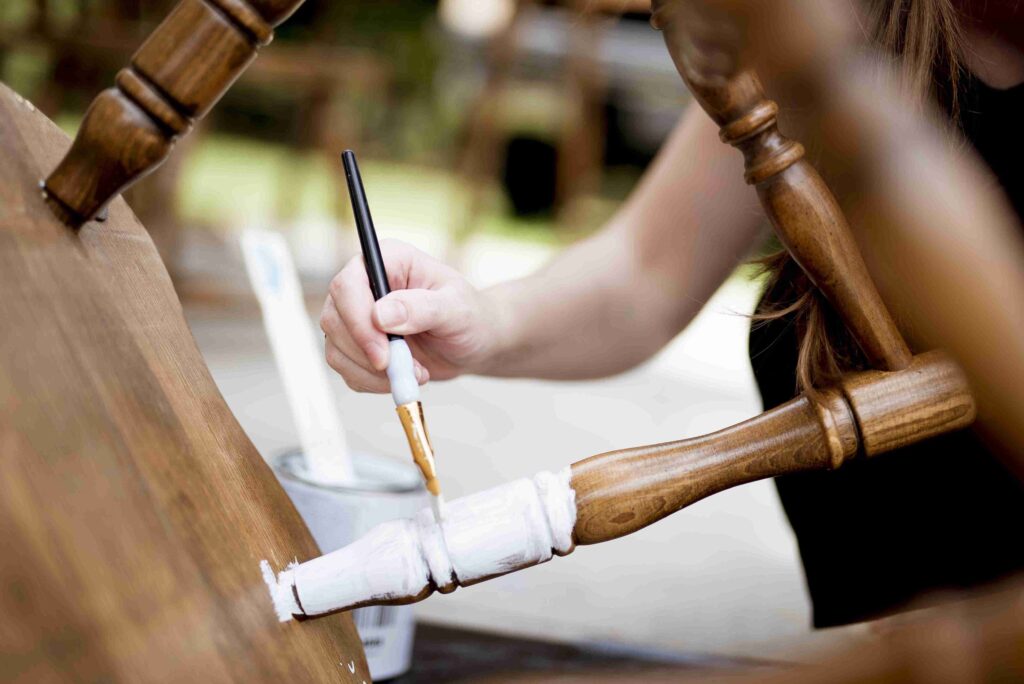
Can You Paint Over Gel Stain? (Complete Guide)
Thinking about giving that old gel-stained furniture or trim a fresh coat of paint?
You’re not alone. A lot of people wonder if it’s even possible to paint over gel stain, or if they’ll end up with a flaky, peeling mess.
The good news is that you can paint over gel stain, and it can turn out great!
In this guide, we’ll break down how to paint over gel stain. We’ll go over everything from how to properly prep the surface, and when it’s best to avoid painting altogether.
Can You Paint Over Gel Stain?
Yes, you can paint over gel stain!
Painting over gel stain isn’t quite the same as painting over bare wood or a different kind of finish. Gel stain creates a thicker, more durable layer on the surface, which can make it trickier to paint over compared to regular stains.
But with a little prep work, you can totally give your furniture or cabinets a new look!
If you skip the prep work, your paint might peel or chip off easily, which is definitely not the result you’re aiming for.
Also Read: Can You Paint Over Tung Oil?
How To Paint Over Gel Stain
Painting over gel stain is not complicated, but it does require a bit of effort like we said. Here’s a simple guide to get you through it:

Step 1: Clean The Surface
First things first, clean the surface thoroughly. All that dust, grime, and oils need to go before you do anything else. Grab a mild cleaner or some soapy water and wipe down the surface.
This is especially important if the piece has been sitting around for a while.
Use a clean cloth and make sure the surface is completely dry before moving to the next step.
You don’t want any dirt or residue causing problems later.
Step 2: Sand The Surface
Once the surface is clean, the next step is sanding.
This is where you get the surface ready for your paint to stick. You don’t need to strip off all the gel stain, just roughen the surface a little bit. A light sanding with a medium-grit sandpaper (like 150-grit) should do the trick.
Sanding helps create tiny grooves that your paint can grab onto.
You don’t have to go crazy here – just give the surface enough texture to let the paint bond.
Don’t forget to wear a mask and goggles while sanding, especially if it’s a big piece, as you don’t want to breathe in all that dust.
Also Read: Can You Skim Coat Over Wallpaper?
Step 3: Wipe Down The Dust
After sanding, wipe away all the dust.
This part’s important too. Any leftover dust will mess with the bonding between the paint and the surface.
Use a tack cloth or a damp cloth to wipe everything down. You want it to be as clean and dust-free as possible before applying anything else.
Once that’s done, let it dry for a few minutes just to make sure it’s nice and clean.
Step 4: Apply A Bonding Primer
Next, it’s time for a bonding primer. This is a must for your paint to stick to the gel stain.
Regular primers might not work as well on gel stain, but a bonding primer (sometimes called a bonding or adhesion primer) will do the job. Zinsser and Kilz both make solid options.
Apply one even coat and let it dry according to the instructions.
Depending on the primer you use, you may need to apply two coats. Check the label for directions, but one coat is usually enough.
This step seals in the gel stain and gives your paint something to grab onto.
Don’t skip this step!
Also Read: Do You Prime Before Texture?
Step 5: Paint
Once your primer is dry, you can finally start painting!
Choose a high-quality paint that suits your project. You can use oil-based or latex paint, but latex is usually easier to work with, dries faster, and cleans up with soap and water.

Apply the paint in thin layers to avoid drips or thick patches. Let each coat dry fully before applying the next one. You’ll probably need two or three coats, depending on the color and the type of paint you choose.
After painting, let your piece dry for a good 24 hours (or as long as the paint instructions suggest). This gives the paint plenty of time to cure and harden.
And voila! You’ve successfully painted over gel stain.
Do You Have To Remove The Gel Stain First?
No, not unless the surface is damaged, flaking, or applied unevenly.
In most cases, you can leave the gel stain in place as long as you sand and prime it well.
That said, if your gel stain is super thick or gunky, or it’s starting to peel, you might want to strip it off first. There are chemical gel stain removers out there, but they’re kind of a pain and pretty messy.
If you’re working with something small or detailed and just can’t get a smooth surface, stripping might be worth it.
Otherwise, stick with the cleaning, sanding, and priming route. It works for most situations.
When You Shouldn’t Paint Over Gel Stain
Sometimes, painting over gel stains isn’t a good idea. Here are a few situations where you might want to rethink it:
- The surface is flaking, cracked, or bubbling
- There’s heavy wax or polish buildup that won’t come off
- The wood is warped, damaged, or has moisture problems
- You eventually want to go back to a natural wood look
In those cases, you may want to fully strip the surface or consider a different refinishing option altogether.
Also Read: Eggshell Paint On Ceiling
Can You Gel Stain Over Paint?
If you’re wondering if you can go the other way and apply gel stain over paint, the answer is yes, but with some extra steps.
Gel stain will sit on top of painted surfaces, but it won’t soak in (just like with wood).
This means the final look is more of a glazed or tinted finish. If the paint underneath is glossy, you’ll definitely need to sand and possibly prime first to make sure the stain goes on evenly.
Also, darker gel stains don’t always show up well over dark paint. You’ll get better results if the paint color is light or white.
And don’t expect a woodgrain look unless you’re using special faux finishing tools or techniques.
So yes, you can gel stain over paint, but it’s more of a decorative finish than a real stain job.
Bottom Line
The main difference between painting over regular stain and gel stain is the prep.
Gel stain sits on the surface and leaves a slick finish, so you have to clean, sand, and prime it first. But once you do, paint will go on just fine and stay put.
Painting over gel stain is a great way to refresh furniture, cabinets, or trim without stripping everything down to bare wood. Just follow the steps, don’t skip the primer, and take your time.
You’ll end up with a smooth, durable finish that looks like you hired a pro







